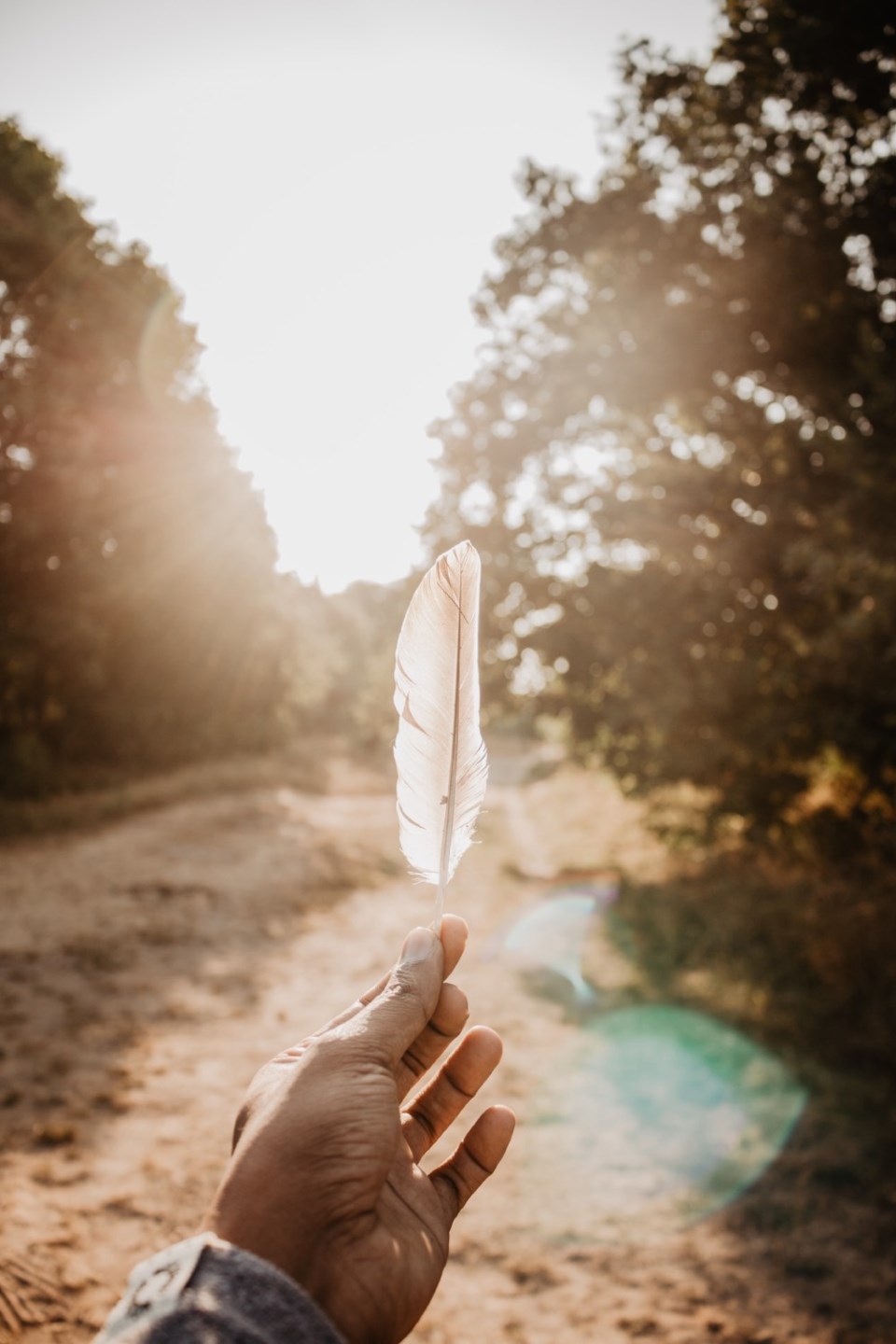It all started with a Flicker feather my grandson gave me yesterday. I’ve always been fascinated by the beauty and variety of feathers. Among the many I have collected over the years are a minute and delicate hummingbird feather, a black-banded auburn tail-feather from a red-tailed hawk, a spectacularly long and tapered one from the neck of a blue heron and the vivid orange and black one from a Flicker’s wing. Firm swim feathers from a cormorant, and tiny puffballs of eagle-down – a sign of healing in some indigenous cultures – feathers peep out from drawers and rest in cups and vases, mingle with dried flowers and fresh, mark pages in my favourite books and flutter gently when I open long unused containers. Feathers have a magical quality about them.
When my partner died suddenly eleven years ago, among the tasks I found particularly challenging was finding a fitting place for his ashes. Half went to his family in Nova Scotia to scatter. The other half lingered in a wooden box in my closet. Then one day I remembered a story, probably apocryphal, of people carrying a loved one’s body from place to place during the year after their death, visiting all the places the person had loved. Somehow that spoke to me. I started with a place close by – a small lake near our home. As I scattered a handful of ashes, I noticed a beautiful feather, picked it up and placed it in the box. Over the next months I wandered farther afield with my box of memories, reliving happy and sad times and places we had shared and often found a feather close by. Gradually the box emptied of ashes and filled with feathers – some spectacular, some ordinary, all mystical and significant.
In some Christian communities, a heron is a symbol of the Holy Spirit. Marveling at the diversity of their feathered form, from their extravagantly shaped head, neck and breast feathers to the tiniest blue smudges of down, easily convinces me of the aptness of that depiction.
Feathers can symbolize other things too. Dumbo, the big-eared baby elephant flaps a feather with his trunk, giving him the confidence to fly, something he was already capable of without the aid of sign or symbol. In another story, a teacher hands a small bag of feathers to each student on Friday. “This afternoon,” she tells them, “leave a feather at each house you pass on your way home. On Monday, you can tell the class where you left them.” The mystified students do as they are asked. On Monday morning, they chatter excitedly about the places they placed their feathers. “Now, on your way home this afternoon, collect the feathers you left on Friday,” the teacher announces. They students look at her in confusion. “But teacher, the feathers will be long gone, blown all over town and who knows where by now.” “Ah,” said the teacher, letting her words sink in. “You’re right. The feathers would be impossible to collect again. Those feathers are like our words. When we speak, our words travel to places we could never imagine. If our words are gentle and kind, they will travel far, spreading happiness and harmony. If our words are cruel or unkind, they will travel far, spreading suffering and hurt.” These days the power of social media has exponentially increased the power of our words to cause healing or destruction, to spread compassion or hatred. The danger and possibilities are more real than any story. The feathers we share have never been more powerful. It all starts with a feather.
Julianne Kasmer is a minister in the United Church of Canada and retired chaplain at Our Place Society.
You can read more articles on our interfaith blog, Spiritually Speaking at /blogs/spiritually-speaking
* This article was published in the print edition of the Times 91‘≠¥¥ on Saturday, November 25th 2023



